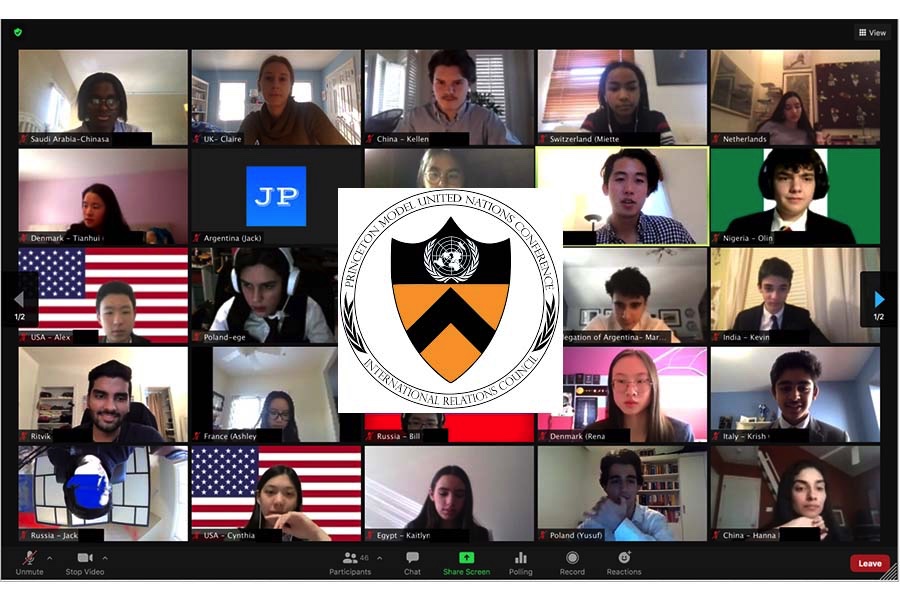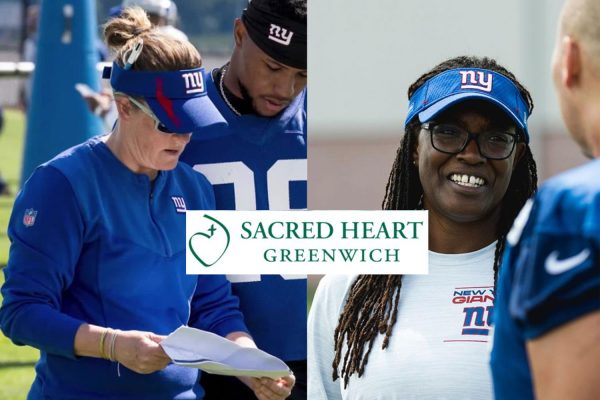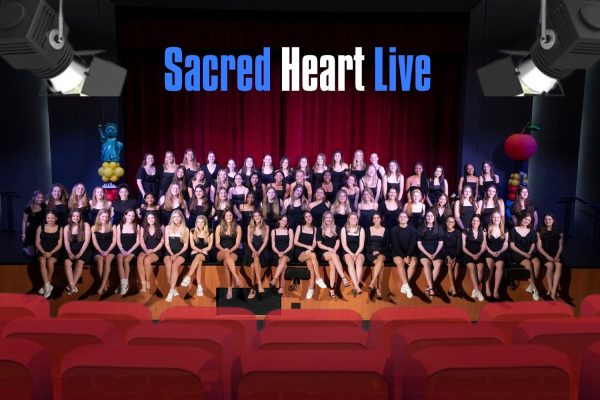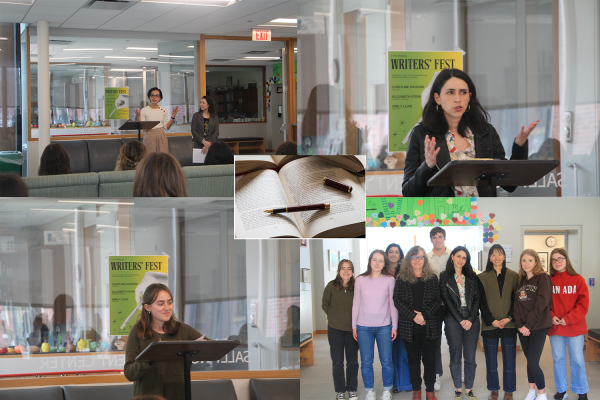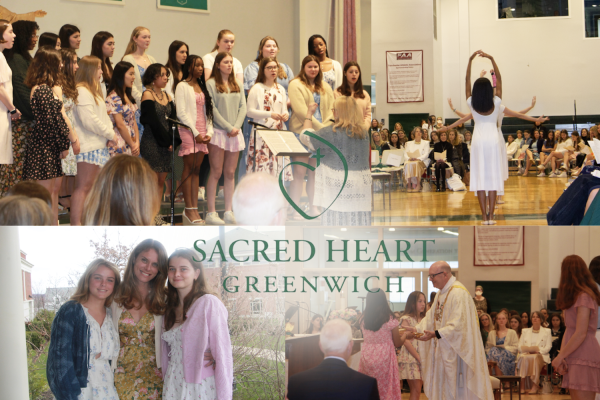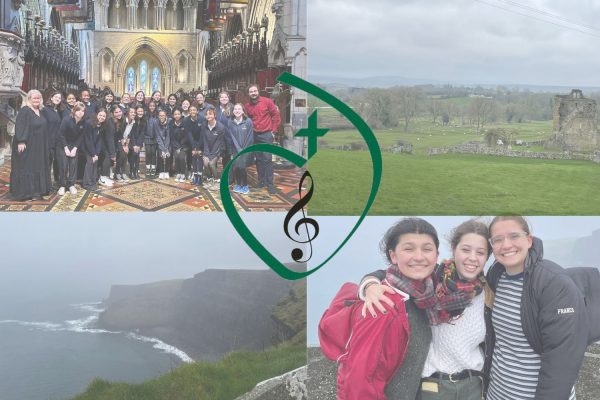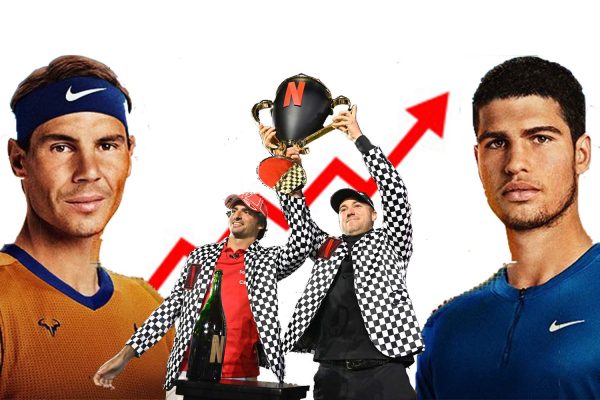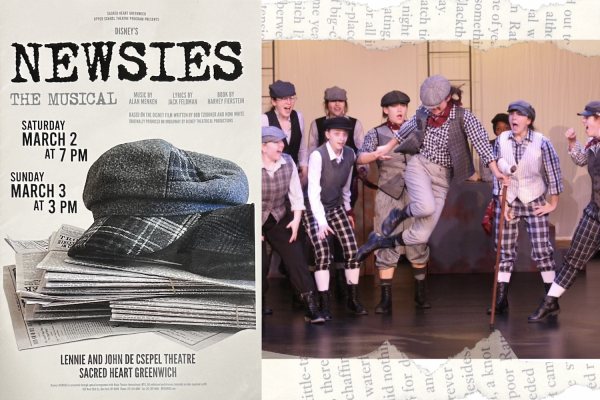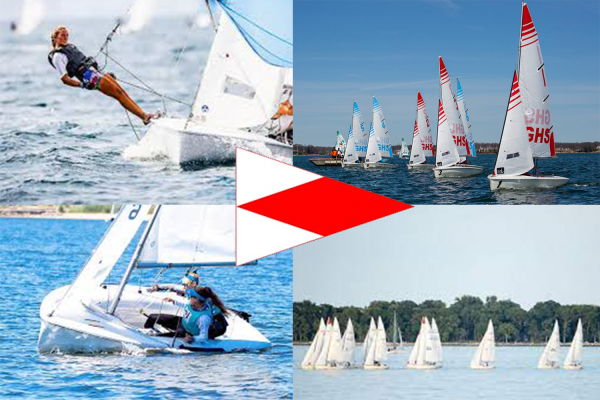Students propose solutions to global challenges at the Princeton Model United Nations Conference
Students develop leadership and interpersonal skills at the Princeton Model United Nations Conference.
This year, the Sacred Heart Greenwich Model United Nations (UN) team virtually attended the annual Princeton Model United Nations Conference (PMUNC). The conference took place February 19 to 21, utilizing the online conference platform Gatherly. Sophomores Kenza and Nouha Aissaoui, juniors Leah Allen, Natalie Becue, Sarah Boutelle, Kayla Malcolm-Joseph, and Claire Miller, and seniors Ursula Vollmer and Morgan Wilkens competed at the annual competition.
Princeton University has hosted the annual Model UN conference since 2010. The conference brings together students from more than 20 countries to compete, providing a global perspective on international issues. Model UN equips students with an educational experience that develops skills necessary in a global society, according to princetonirc.org. These opportunities allow students to experience the work of the United Nations through committees that simulate the process of proposing and negotiating solutions to world issues.
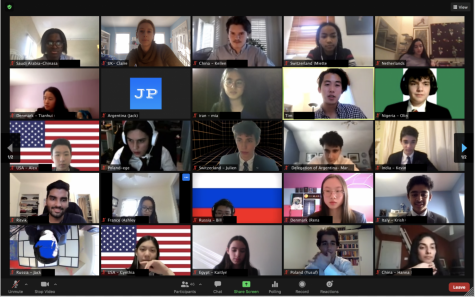
Morgan joined Model UN to become better versed in global affairs. This year, she was a delegate for Brazil in the Organization of American States (OAS) Committee.
“I joined Model UN as a way to become more globally aware and better versed in international relations,” Morgan said. “I am an experiential learner, so being immersed in the debate and resolution-making processes at PMUNC helped me truly understand and better appreciate the complexity of diplomacy.”
Typically, Model UN delegates collaborate with their peers to prepare for the conference, working in partners to write their positions papers. In this year’s conference, committees consisted of merely one student, with only two panels that allowed for two co-delegates.
Every year, the PMUNC coordinators provide a conference checklist to help delegates prepare. This year’s list included the typical information of confirming committee assignments, submitting references, and writing position papers explaining their assigned country’s stance on the debated issue. In addition, organizers suggested that participants familiarize themselves with Gatherly, the virtual conference platform. Among the changes that come with a virtual platform, the number of students per school that could participate in the conference dropped to ten. As a result, only half of the Sacred Heart Model UN Team competed at PMUNC this year. The rest of the team will attend the National High School Model United Nations (NHSMUN) Conference held in March.
Claire joined Model UN to learn about the resolutions of international issues. She represented the United Kingdom in the Disarmament and International Security Committee (DISEC) at this year’s conference.
“A virtual conference definitely felt different because it was harder to collaborate with the other students over Zoom,” Claire said. “However, the chairs of our committee helped make the virtual experience effective and engaging by using online tools such as a virtual poll feature, the raise hand feature, and also by asking for our feedback throughout the conference.”
Morgan agreed that despite the challenges of a virtual conference, it made aspects of Model UN easier. PMUNC maintained a semblance of the in-person experience as it continued to instill the importance of global connections and learning through collaboration.
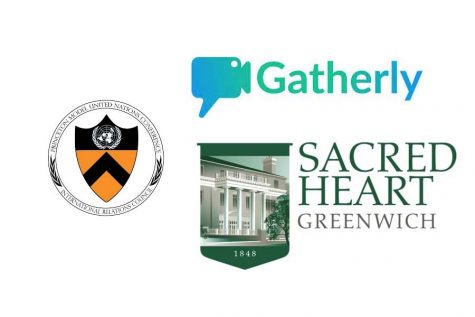
“Although challenging, I think being virtual granted me more confidence in speaking in front of the group, and encouraged me to self-motivate my learning of the resolution–making process since I was not surrounded by my peers in person,” Morgan said. “My favorite part of Model UN is the opportunity to meet new people in an intellectual environment. I was able to establish connections while simultaneously learning new things through collaboration with my peers in my committee, which made the entire experience even more enriching.”
Mrs. Jillian Bozzi, Upper School History Teacher and Model United Nations Administrator, believes Model UN affords students numerous opportunities to gain beneficial skills and experiences. During these conferences, students apply leadership, problem solving, critical thinking, and teamwork skills to solve real-world issues.
“Attending conferences is extremely beneficial for students because it allows them to look at the contemporary, real-time problems our world faces, the impact these issues have on different areas of the world and work out resolutions with their fellow delegates to be presented to the United Nations,” Mrs. Bozzi said. “Also, when attending conferences, it gives great opportunity to practice public speaking, the art of deliberation, and contributes to a growth mindset.”
The goal of the conference is to negotiate with delegates from other countries to propose and draft a solution regarding the issue at hand. This experience improves students’ analytical, writing, and leadership skills, as well as their diplomatic skills, according to mindler.com. Claire spoke about her experience collaborating with students from other schools to tackle global issues.
“I learned how to work together with many other students, even though we represented countries with differing viewpoints and goals,” Claire said. “We brought our ideas together to develop a resolution paper that worked to resolve our topic: The Implications of Small Arms and Light Weapons (SALW) on National Security.”
Featured Image by Gabrielle Wheeler ’23
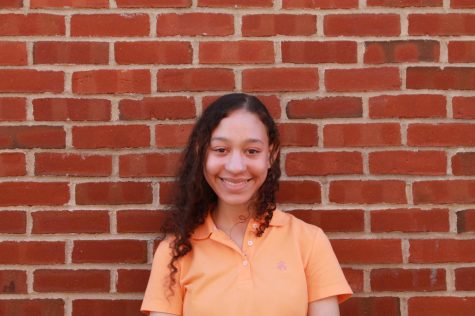
In Gabrielle’s third year on the staff of the King Street Chronicle, she is delighted to return as Head Content and Graphics Editor. Gabrielle is eager...

